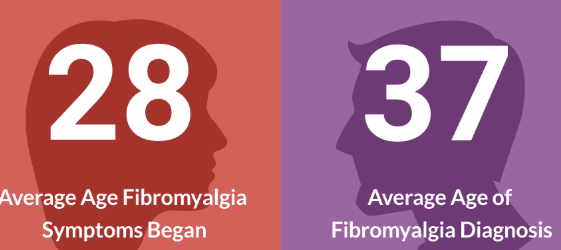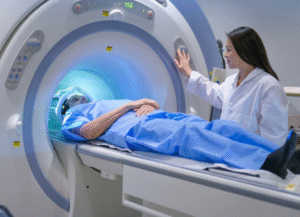What Age Does Fibromyalgia Start? Unraveling the Mystery of Early Onset Symptoms
What Age Does Fibromyalgia Start? Understanding the Onset Across Life Stages
Fibromyalgia is a complex, chronic condition known for its persistent pain, fatigue, and cognitive difficulties. One of the most frequently asked questions about this condition is: what age does fibromyalgia start? While many assume it’s a disease of adulthood, the truth is more nuanced. Fibromyalgia can affect individuals across a wide age spectrum, including children, adolescents, and older adults.
Understanding when fibromyalgia typically begins helps with earlier recognition, timely diagnosis, and more effective treatment. The age of onset also influences how symptoms present, how they are managed, and how the individual adapts over time. In this article, we explore all stages of life where fibromyalgia may emerge, what signs to look for, and why early detection matters.
The Most Common Age Range for Onset
Most cases of fibromyalgia are diagnosed between the ages of 20 and 50. This time frame aligns with the years when individuals are most active in their personal and professional lives, which often makes the condition more noticeable and disruptive. Among this age group, the early 30s to late 40s is the peak period for diagnosis. However, symptoms may have started years earlier before a formal diagnosis is made.
Women are diagnosed more frequently than men, particularly in their reproductive and peri-menopausal years. Hormonal fluctuations during this time may influence symptom severity, though the exact role of hormones in fibromyalgia remains a subject of research.
Early-Onset Fibromyalgia in Teens and Adolescents
While less common, fibromyalgia can start during childhood or adolescence. Pediatric fibromyalgia presents similarly to adult cases, though young patients may struggle to describe their symptoms clearly. Pain, sleep disturbances, irritability, and academic difficulties are often initial signs.
The average age for pediatric onset is around 13 to 15 years. Girls are more likely than boys to develop the condition, often around the time of puberty. Early-onset fibromyalgia may be mistaken for growing pains, anxiety, or behavioral issues. Without appropriate attention, this delay in recognition can lead to years of untreated symptoms and emotional distress.
Awareness among pediatricians and parents plays a vital role in ensuring young patients receive the right diagnosis and support.
Onset in Early Adulthood
In early adulthood, fibromyalgia often begins subtly. Individuals in their 20s may notice increased fatigue, stiffness in the morning, headaches, or sleep problems that seem out of proportion to their activity levels. These symptoms are sometimes dismissed as stress, overwork, or anxiety.
Because young adults are expected to be at their physical peak, admitting to chronic discomfort can feel stigmatizing. Many people try to push through the pain, which may worsen their condition over time. Recognizing these symptoms early and seeking evaluation can prevent long-term suffering and functional decline.
Fibromyalgia in Middle Age
Middle-aged adults, especially women between 40 and 50, form the largest demographic of diagnosed fibromyalgia cases. This period is marked by hormonal changes, increased life responsibilities, and cumulative stress, all of which may act as triggers or amplifiers of symptoms.
By this stage, the condition often manifests more clearly: persistent pain in multiple areas, cognitive fog, digestive issues, and emotional symptoms like anxiety or depression. Diagnosis is more likely because the symptoms are harder to dismiss and often interfere with work and daily life.
Late-Onset Fibromyalgia in Older Adults
Though less common, fibromyalgia can begin in individuals over 60. Older adults may already be managing multiple health conditions, making it difficult to identify fibromyalgia as a separate issue. Symptoms such as stiffness, pain, and poor sleep are often attributed to aging or arthritis.
However, fibromyalgia in older adults presents unique challenges. Pain may be more diffuse, and cognitive symptoms can be confused with early dementia. Fatigue might be severe enough to reduce mobility and independence. Because diagnostic guidelines are often based on younger populations, older individuals are at risk of being underdiagnosed or misdiagnosed.
Does Age at Onset Affect Prognosis?
The age at which fibromyalgia begins can influence how well symptoms are managed and how they affect long-term quality of life. Early-onset fibromyalgia often has a longer course but can benefit from early interventions. Those diagnosed later in life may need more complex care plans, especially when other age-related conditions are present.
Younger individuals tend to adapt more easily to lifestyle changes, which can significantly improve outcomes. In contrast, older adults may face physical limitations or medication interactions that complicate treatment. Nonetheless, people of all ages can learn to manage fibromyalgia successfully with the right support.
Key Signs to Watch for at Any Age
Recognizing fibromyalgia early requires vigilance and awareness. Some of the hallmark signs that can appear across all age groups include:
- Unexplained chronic pain lasting more than three months
- Fatigue that does not improve with rest
- Poor sleep quality or non-restorative sleep
- Cognitive challenges such as forgetfulness and mental fog
- Sensitivity to touch, light, or temperature
- Irritable bowel symptoms or frequent headaches
If several of these symptoms are present and no other medical explanation is found, fibromyalgia should be considered.
How Early Diagnosis Makes a Difference
Getting diagnosed at the earliest possible stage can prevent years of uncertainty and mismanagement. It allows patients to:
- Start effective symptom management sooner
- Avoid unnecessary treatments or medicationss
- Learn coping strategies to reduce flare-ups
- Improve their mental health and resilience
- Build a supportive healthcare team
Education about fibromyalgia also helps families, employers, and schools better accommodate those affected.
Conclusion
So, what age does fibromyalgia start? While the most common age range for diagnosis is between 30 and 50, the condition can begin in childhood, adolescence, or even later in life. The timing of onset plays a significant role in how symptoms are perceived, diagnosed, and managed.
No matter the age, early recognition and a comprehensive approach to treatment can greatly improve the quality of life for those with fibromyalgia. While it remains a chronic condition, its impact can be minimized through awareness, support, and evidence-based strategies.



